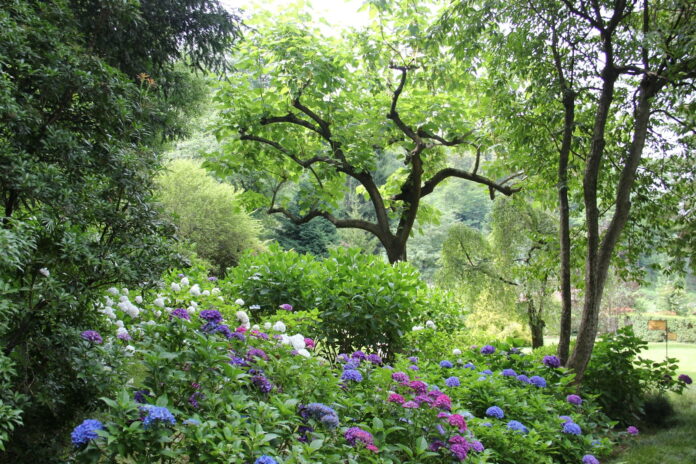As urbanization and habitat fragmentation continue to alter the landscapes that once thrived with diverse biological communities, the importance of cultivating biodiversity where we can has never been more crucial. Backyards, which are often overlooked as potential havens for native flora and fauna, can play a significant role in the conservation of local ecosystems. Encouraging native biodiversity is not only beneficial for the environment but also for the well-being of humans and the resilience of our natural resources.
Cultivating Native Gardens
Cultivating a garden rich in native plants is the cornerstone of backyard biodiversity. Native species are adapted to the local climate, soil, and existing wildlife, which makes them more resilient and easier to maintain than non-native species. When homeowners plant native flowers, shrubs, and trees, they create a foundation for a thriving ecosystem that supports a wide range of wildlife. These plants offer the necessary habitat and food sources for native insects, birds, and other creatures, many of which are important pollinators and contribute to the health of the environment.
To start a native garden, research the plant species that are indigenous to your area. This can often be done with the help of local nurseries, gardening clubs, or extension services. They can provide valuable information on the best plants to choose for your specific conditions, as well as advice on how to care for them. When selecting plants, prioritize diversity to ensure a year-round supply of food and shelter for wildlife. This includes a mix of trees, shrubs, perennials, and grasses that bloom at different times of the year.
In addition to selecting the right plants, creating a garden that mimics the natural landscape can enhance its ecological value. This involves varying plant heights, using natural groupings, and leaving some areas undisturbed to encourage natural regeneration. By doing so, you not only create a more visually appealing garden but also one that offers a more complex habitat for various species. Remember, a native garden should evolve over time, becoming more self-sustaining as it matures and requiring less intervention from the gardener.
Attracting Local Wildlife
Attracting local wildlife to your backyard starts with providing the basic necessities of life: food, water, shelter, and space to raise young. A diverse native garden will provide much of the food and shelter needed, but homeowners can enhance these offerings by installing bird feeders, birdhouses, and even bat boxes or bee hotels for various species. Water features such as birdbaths, small ponds, or even a simple dish of water can attract birds, insects, and amphibians, creating a lively hub of activity.
To further encourage wildlife visitors, it is important to avoid the use of pesticides and herbicides, which can be harmful to the animals you are trying to attract. Instead, opt for natural pest control methods such as encouraging predatory insects and birds that feed on pests. Composting and mulching can also improve soil health, which benefits the plants that wildlife depends on. By fostering a balanced ecosystem, nature often keeps pest populations in check.
Creating ‘wild’ zones in your yard, where natural processes are allowed to take place with minimal human intervention, can also be beneficial. These areas can provide crucial nesting sites, cover, and foraging ground for wildlife. Leave leaf litter in place, maintain a woodpile, or allow a patch of grass to grow tall. These simple actions can make your backyard a more inviting place for creatures like butterflies, songbirds, and small mammals, all of which add to the vibrancy and health of your local ecosystem.
Sustaining Biodiversity at Home
Sustaining biodiversity in your backyard is an ongoing process that requires attention and care. One of the most effective ways to maintain a healthy ecosystem is to establish a variety of plants that bloom throughout the growing season. This ensures a constant supply of nectar, seeds, and berries for wildlife, and supports a wide range of pollinators. Planting in layers, from ground cover to canopy, provides different habitats and niches for a variety of species.
Another key aspect of sustaining biodiversity at home is connectivity. Providing corridors or stepping stones of habitat that link to other green spaces can help wildlife move freely and safely. This is particularly important in urban and suburban areas where natural habitats are fragmented. By working with neighbors to create a network of wildlife-friendly yards, you can contribute to creating larger, interconnected spaces for biodiversity to flourish.
Lastly, education and community involvement play a vital role in sustaining biodiversity. Sharing your experiences with friends, family, and neighbors can inspire others to create their own native gardens and habitat spaces. Participating in citizen science projects, such as bird counts or butterfly monitoring, can also contribute valuable data to conservation efforts. By staying informed and involving the community, homeowners can ensure that their efforts to enhance biodiversity have a lasting impact.
In cultivating native gardens, attracting local wildlife, and sustaining biodiversity at home, homeowners have the power to create vital sanctuaries for native flora and fauna. These backyard ecosystems not only provide essential habitats for wildlife but also bring the beauty and benefits of nature closer to our daily lives. By taking intentional steps towards fostering biodiversity, individuals contribute to a larger collective effort to preserve the intricate web of life that sustains us all. As we embrace these practices, we become active participants in the stewardship of our local environments, ensuring that they remain vibrant and teeming with life for generations to come.
